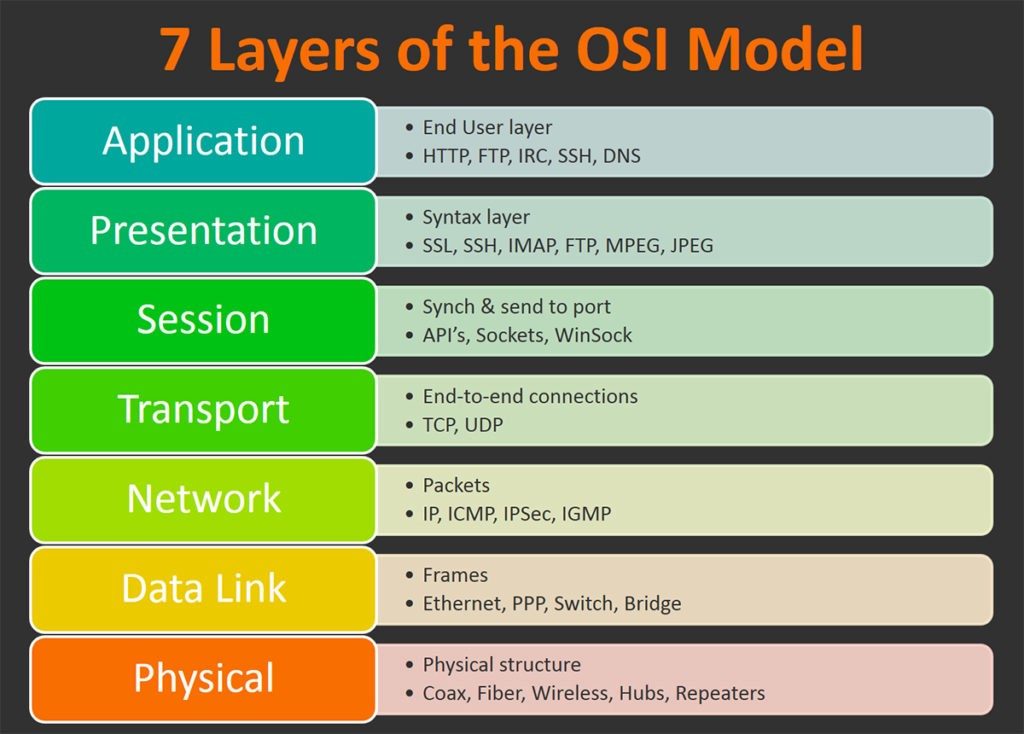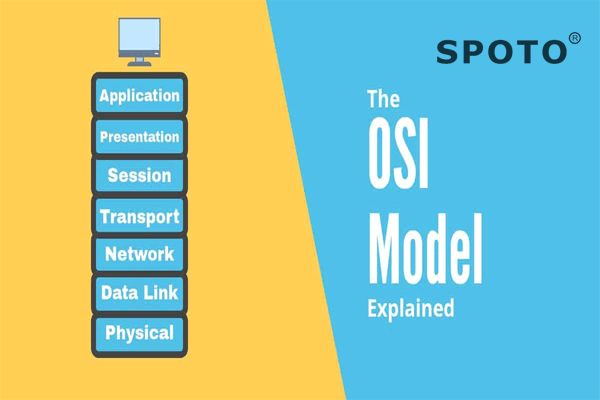
Physical Layer
Activate, maintain, and close the mechanical, electrical, functional, and process characteristics between communication endpoints. This layer provides a reliable physical medium for transmitting data for the upper-layer protocol. Simply put, the physical layer ensures that the original data can be transmitted on various physical media. The physical layer remembers two famous device names, repeater (also called amplifier) and hub.
Data Link Layer
The data link layer provides services to the network layer based on the services provided by the physical layer. The most basic service is to reliably transmit data from the network layer to the target machine network layer of neighboring nodes.
People want to achieve this goal, the data link must have a series of corresponding functions, mainly including: how to combine data into data blocks, in the data link layer, this data block is called a frame, and the frame is a data link The transmission unit of the layer; how to control the transmission of frames on the physical channel, including how to handle transmission errors, how to adjust the transmission rate to match the receiver; and provide the establishment and maintenance of data link channels between two network entities And release management.
The data link layer provides reliable transmission on unreliable physical media. The functions of this layer include physical addressing, the framing of data, flow control, error detection, and retransmission of data.
Important knowledge points about the data link layer:
1> The data link layer provides reliable data transmission for the network layer;
2> The basic data unit is the frame;
3> The primary protocol: Ethernet protocol;
4> Important equipment name: switch.
Network Layer
The purpose of the network layer is to achieve transparent transmission of data between the two end systems. Specific functions include addressing and routing, connection establishment, maintenance, and termination. The services enable the transport layer to understand the data transmission and switching technologies in the network. If you want to remember the network layer with as few words as possible, it is “path selection, routing, and logical addressing.”
Many protocols are involved in the network layer, including the essential protocol, which is also the core protocol of the TCP/IP-the IP protocol. The IP protocol is straightforward and only provides unreliable and connectionless transmission services. The main functions of the IP protocol are connectionless datagram transmission, datagram routing, and error control. Supported by the IP protocol to implement its functions are the address resolution protocol ARP, the reverse address resolution protocol RARP, the Internet message protocol ICMP, and the Internet group management protocol IGMP.
We summarize the specific protocols in the next section. The key points about the network layer are:
1> The network layer is responsible for routing data packets between subnets. Besides, the network layer can also achieve congestion control, Internet interconnection and other functions;
2> The basic data unit is IP datagram;
3> Main agreements included;
Internet Protocol
Internet Control Message Protocol
Address Resolution Protocol
Reverse Address Resolution Protocol
4> Important equipment: router.
Transport Layer
The first end-to-end is the host-to-host hierarchy. The transport layer is responsible for segmenting the upper layer data and providing end-to-end, reliable, or unreliable transmission. Besides, the transport layer also has to deal with end-to-end error control and flow control issues.
The task of the transport layer is to make the best use of network resources according to the characteristics of the communication subnet, to provide the functions of establishing, maintaining and canceling the transmission connection between the conversation layers of the two end systems, and to be responsible for the reliable data transmission from end to end. At this layer, the protocol data units for information transfer are called segments or messages.
The network layer only transmits the data packets sent from the source node to the destination node according to the network address. In contrast, the transport layer is responsible for reliably transmitting the data to the corresponding ports.
Key points about the network layer:
1> The transport layer is responsible for segmenting the upper layer data and providing end-to-end, reliable or unreliable transmission, as well as end-to-end error control and flow control issues;
2> The main protocols included: TCP protocol (Transmission Control Protocol, transmission control protocol), UDP protocol (User Datagram Protocol, user datagram protocol);
3> Important equipment: gateway.
Session layer
The session layer manages session processes between hosts, that is, is responsible for establishing, managing, and terminating sessions between processes. The session layer also uses the insertion of checkpoints in the data to achieve data synchronization.
Presentation layer
The presentation layer transforms the upper layer data or information to ensure that another host application can understand one host application layer information. The data conversion of the presentation layer includes data encryption, compression, format conversion.
Application layer
Provides an interface for accessing network services for operating systems or network applications.
The session layer, presentation layer, and application layer:
1> The basic unit of data transmission is the message;
2> Main protocols included: FTP (File Transfer Protocol), Telnet (Remote Login Protocol), DNS (Domain Name Resolution Protocol), SMTP (Mail Transfer Protocol), POP3 Protocol (Post Office Protocol), HTTP protocol (HyperText Transfer Protocol).
About SPOTO
SPOTO, founded in 2003, concentrates on IT Certification training, included Cisco exam, PMP exam AWS exam, CISSP exam, RedHat Linux exam, and other IT exams. Over 17 years, SPOTO helped tens of thousands of candidates achieve their Cisco CCNA, CCNP, CCIE, PMP, CISSP, AWS certification, conveying numerous IT employees to Fortune 500 companies.












Comments